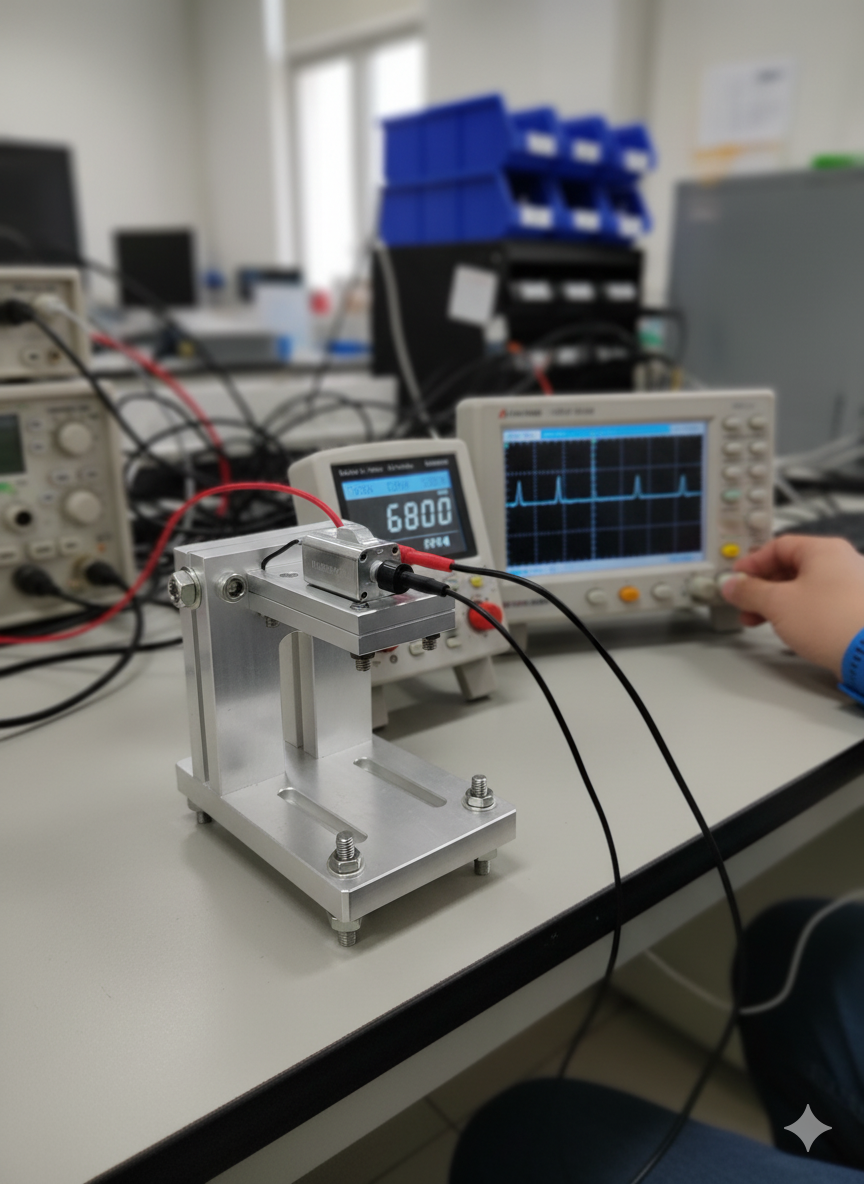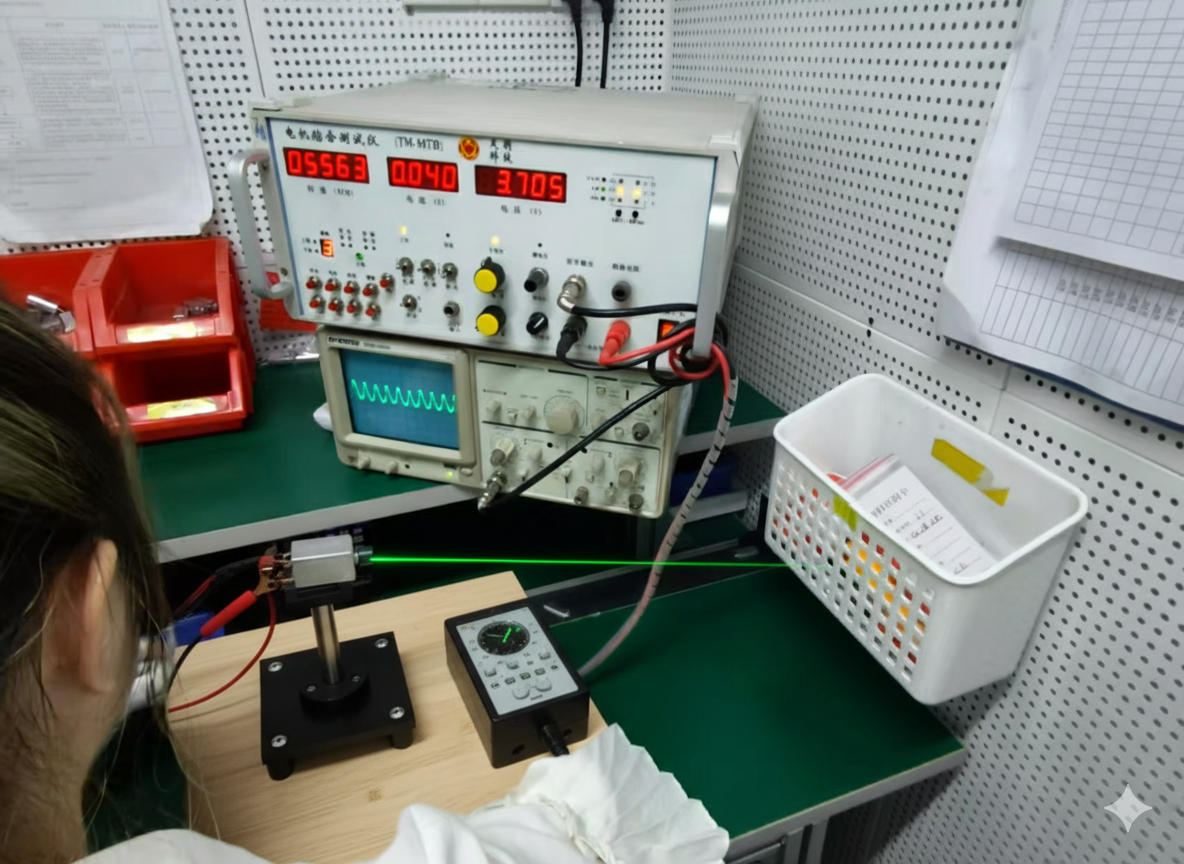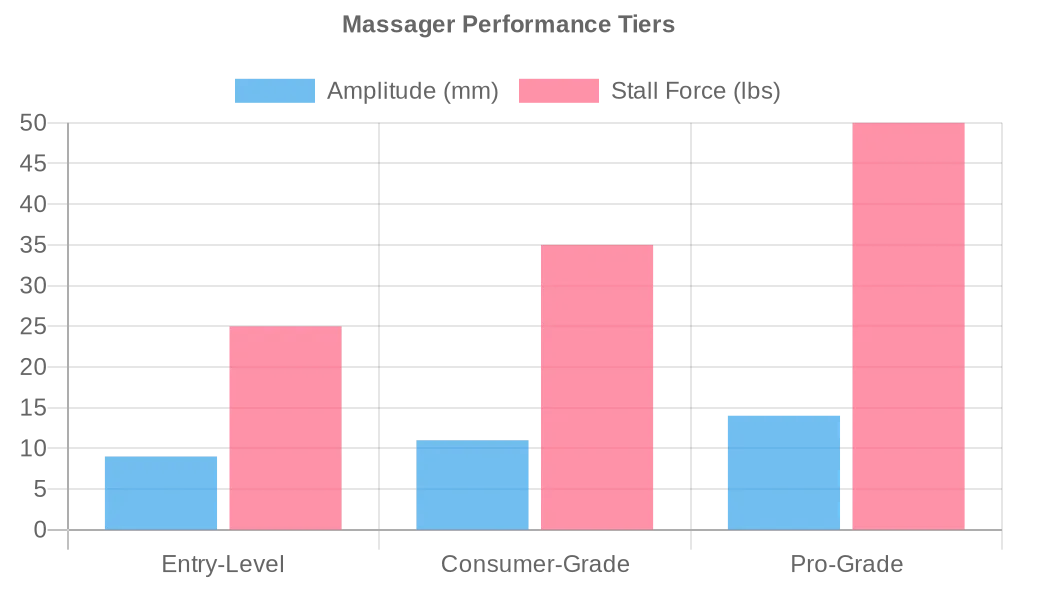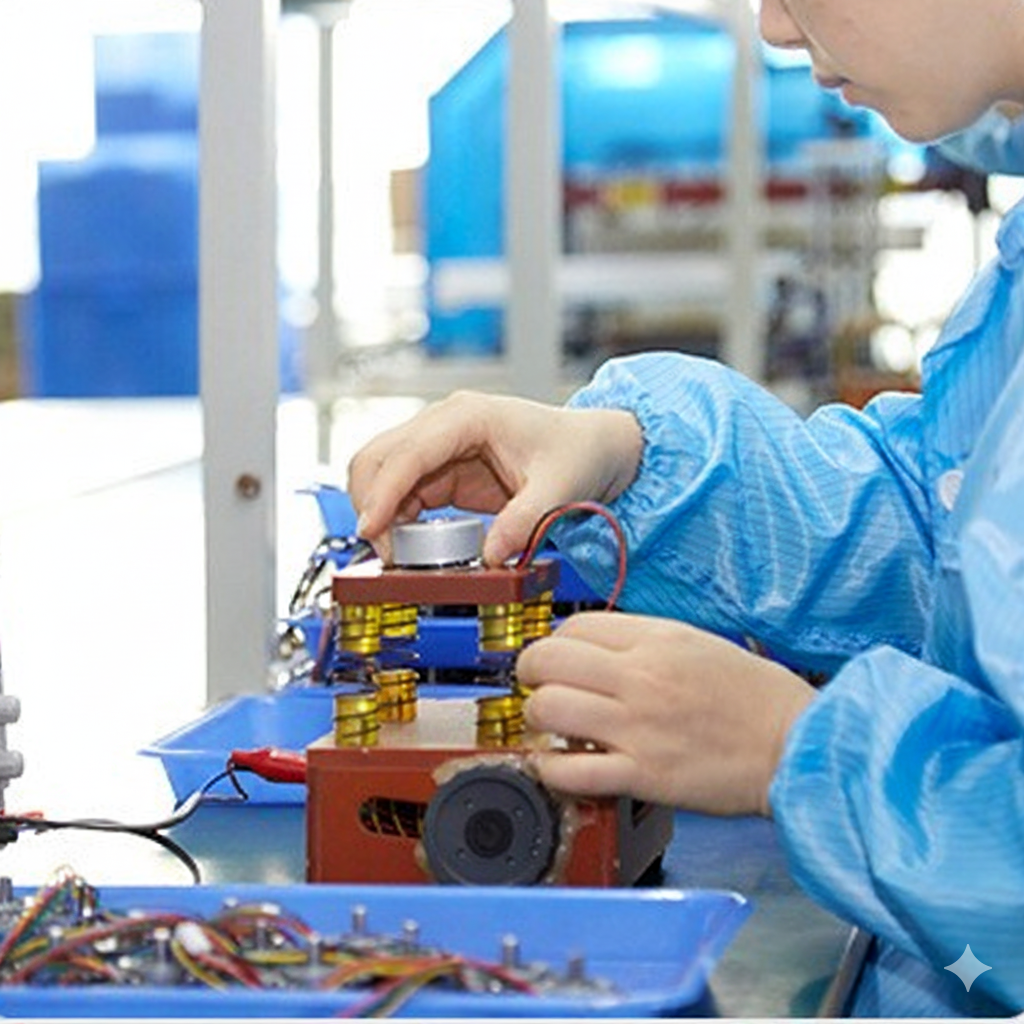Massager Specs: A Sourcing Guide to Amplitude & Stall Force
- By Grace
- Updated on
Ever get lost in a spec sheet? You're staring at a list of numbers—12mm amplitude, 40 lbs stall force, 3200 RPM—and trying to figure out what it all means for your bottom line. It's easy to fall into the "bigger is better" trap, but the truth is far more complex. These percussive massager specs aren't just technical details; they are the very soul of your product and the promise you make to your customer.
I’ve seen brands fail because they chased the highest numbers on paper, ending up with a product that was too aggressive and too expensive for their market. I’ve also seen brands skimp on these specs and end up with a device that felt weak, leading to a flood of bad reviews.
The key isn't chasing numbers; it's matching performance to your target customer. In this guide, I'll give you a straightforward breakdown of what these critical specs really mean, which numbers you should be targeting for different markets, and how we guarantee the performance we promise.
What Do Amplitude and Stall Force *Actually* Mean?
Let's use a simple analogy: boxing. Thinking about these specs in terms of a boxer's punch clears everything up instantly.
Massager amplitude is the length of the punch. It’s how far the boxer's arm extends, measured in millimeters (mm). A short amplitude (say, 6-8mm) is just a light tap that vibrates the surface of the skin. A true percussive massager needs a longer amplitude—10mm or more—to deliver a punch that reaches deep into the muscle tissue. It’s the difference between a jab and a knockout blow.
Massager stall force is the power behind the punch. It’s how much pressure, measured in pounds (lbs), you can apply before the boxer's arm gives out. A low stall force (under 25 lbs) means the motor will quit the second you press into a large muscle. A high stall force (40 lbs or more) allows you to dig in deep without the device stalling. It's the true measure of the motor's strength.
I remember a fitness brand owner who came to us after his first product failed. Customers complained it "just buzzed on the skin." The device had a high RPM but a tiny 6mm amplitude and a stall force of just 15 lbs. It was a vibrator, not a percussive tool. That's a critical lesson when learning how to choose a massager gun.

What Specs Define a "Premium" Product?
So what numbers separate a "pro-grade" tool from a cheap consumer gadget? It all comes down to finding the right balance for your target user.
A physical therapist who sources from us explained it perfectly: "I need a tool with at least 12mm amplitude and 40 lbs of stall force. Anything less stalls out on my athlete clients and doesn't provide the deep myofascial release they need."
The market can be broken down into three performance tiers:
- Entry-Level (Casual Users): An amplitude of 8-10mm and a stall force of 20-30 lbs is perfect. It provides a noticeable effect without being too intense.
- Consumer-Grade (The Core Market): Here, what is a good amplitude for a massager is 10-12mm, with a stall force of 30-40 lbs. This delivers a truly effective deep-tissue massage for most home users.
- Pro-Grade / Premium (Athletes & Clinicians): The numbers here are non-negotiable. You need a minimum of 12mm amplitude (ideally 14-16mm). What is good stall force for a massager in this tier is at least 40 lbs, with elite models pushing 50-60 lbs.

This chart visualizes the clear distinction between the tiers. As performance increases, so does the target market value, allowing you to position your private label massager performance strategically.

How Can You Trust the Specs on the Sheet?
A spec sheet is a promise. But in this industry, promises are often broken. How can you be sure that the 1,000th unit in your order has the same 45 lb stall force as the sample you approved? It comes down to solid engineering and rigorous testing.
These performance specs aren't arbitrary numbers; they are the direct result of the device's motor and crank mechanism. A higher stall force requires a more powerful—and more expensive—high-torque brushless motor. Similarly, the crank mechanism that turns rotation into percussion has to be tough enough to handle the force. A cheap plastic one will fail. This is why our Pro-Grade models use reinforced all-metal components—a key indicator of true massager motor performance.

To guarantee these specs, we pull units from the assembly line and test them on calibrated equipment. We use digital force gauges to measure the exact stall force and laser sensors to verify the amplitude. We can provide these QC reports with your shipment, giving you full confidence that every unit meets the performance you paid for.
How Components Drive Cost and Performance
This table shows the direct link between the internal components, the resulting performance, and the impact on your unit cost. This is the exact framework we use to engineer a product that fits your budget and brand goals.

Massager amplitude and stall force are the heart and soul of your massager. By understanding what they mean and adopting a tiered strategy, you can move beyond confusing spec sheets and start building a product line that is perfectly positioned for success. A partner who can guarantee these specs is essential for building a brand that lasts.
If you're ready to build a product with guaranteed, verifiable performance, contact our team. Let's discuss your market and design a massager with the exact specs you need to win.




